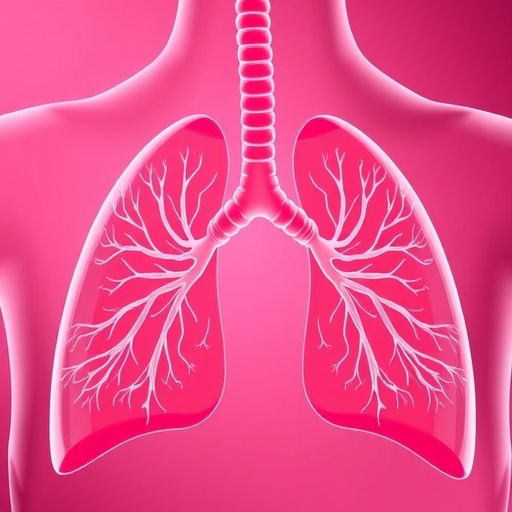In recent years, the medical community has made significant strides in understanding and treating pulmonary arterial hypertension (PAH), a progressively debilitating condition characterized by high blood pressure in the pulmonary arteries. A recent research study has emerged, focusing specifically on a promising new treatment option known as Seralutinib. Conducted as part of the TORREY open-label extension study, this investigation has brought forth new insights that could pave the way for enhanced therapeutic strategies for adults suffering from this challenging illness.
Pulmonary arterial hypertension remains a complex and multifactorial disease that poses a considerable threat to the lives of those who are affected. This condition is often marked by various symptoms, including breathlessness, fatigue, and in severe cases, heart failure. Traditional treatment methods have provided some relief but often fall short of meeting the multifaceted needs of patients. In this context, Seralutinib emerges as a beacon of hope, offering a novel mechanism of action that targets alternative pathways involved in the exacerbation of PAH.
The TORREY study has provided a comprehensive evaluation of Seralutinib’s efficacy and safety profile through a robust design that allows for longitudinal patient follow-up. One of the key aspects of the study was its open-label structure, enabling both researchers and participants to have an authentic understanding of treatment effects without the ambiguity often introduced by placebo control. Unlike earlier investigations, this study has engaged a diverse population, representing various demographics and stages of PAH, thus enhancing the generalizability of the findings to a broader patient spectrum.
Furthermore, a critical component of the study involved assessing the long-term effects of Seralutinib on pulmonary vascular resistance, an essential marker that helps gauge the severity of PAH and patient prognosis. Throughout the follow-up period, investigators observed significant improvements in this parameter alongside patient-reported outcomes, enhancing the evidence base for Seralutinib as a formidable option in the therapeutic arsenal against PAH.
In addition to its beneficial effects on pulmonary hemodynamics, Seralutinib’s impact on quality of life has also been a focal point of the investigation. Patients reported noticeable enhancements in their daily activities and exercise capacities, skills that are often severely compromised by PAH. By enabling improved functional abilities, Seralutinib not only addresses the physiological constraints of the disease but also serves as a catalyst for enhancing overall patient well-being and societal engagement.
The pharmacological mechanism of Seralutinib is particularly intriguing, as it operates differently compared to existing treatments, such as endothelin receptor antagonists and phosphodiesterase-5 inhibitors. This differentiation in mechanism highlights the potential for Seralutinib to provide treatment options for patients whose conditions may not have sufficiently improved with traditional routes. The implications of this become increasingly significant as clinicians navigate the complexities of individualized medicine, tailoring therapies based on the unique profiles and responses of each patient.
Moreover, the safety profile of Seralutinib has been found to be manageable, with a range of adverse effects observed that were consistent with those identified in earlier clinical trials. Most notably, serious adverse events were relatively rare, reiterating the tolerability of Seralutinib in adults living with PAH. By establishing a clear understanding of risk versus benefit, healthcare practitioners could confidently incorporate this novel agent into their treatment regimens, optimizing patient outcomes while minimizing potential hazards.
As a part of the ongoing assessment of Seralutinib, the TORREY study highlighted the importance of continuous monitoring and follow-up, a critical component of managing chronic illnesses like PAH. With longer follow-up periods demonstrating sustained benefits and minimal risks, the approach toward ongoing patient care appears increasingly favorable, shedding light on how future pharmacotherapy for pulmonary arterial hypertension may evolve.
The study anticipates that the data gathered from the TORREY open-label extension will spur further research into Seralutinib’s long-term application and effectiveness. The intention is to solidify its role within an expanding portfolio of PAH treatments, and to refine guidelines for optimal patient management. As the medical community continues to dissect these findings, there lies an expectation of heightened interest from pharmaceutical stakeholders aiming to invest in similar therapeutic innovations.
With the growing emphasis on precision medicine, investigations like those stemming from the TORREY study not only enrich our understanding of PAH but also bolster the potential for targeted therapies to profoundly impact patient lives. Following the completion of this rigorous study, forthcoming publications are anticipated to provide further clarity on the precise mechanisms of Seralutinib and its place within modern therapeutic protocols for pulmonary arterial hypertension.
As healthcare professionals await regulatory decisions regarding the broader use of Seralutinib, the momentum generated from the TORREY study serves as a promising indicator of a forthcoming paradigm shift in treating PAH. The integration of such innovative therapies might signify a new chapter in the management of this chronic, progressive disease, driving forward the quest for improved patient outcomes in an area where too often, treatment options have been limited.
Increasing awareness surrounding pulmonary arterial hypertension is critical, as the condition often goes unrecognized or misdiagnosed in its early stages. Leveraging findings from landmark studies like TORREY can not only facilitate the dialogue about PAH among practitioners but also galvanize community efforts to prioritize research funding, resource allocation, and patient education. It is vital that affected individuals and caregivers have access to comprehensive information regarding the latest advances in treatment, such as those presented by Seralutinib.
In conclusion, the TORREY study marks a significant advancement in our collective fight against pulmonary arterial hypertension, offering new hope to patients and clinicians alike. With the breakthrough understanding brought forth by Seralutinib, there is optimism for deeper exploration into targeted therapies that are set to shape the future landscape of PAH management.
Subject of Research: Pulmonary Arterial Hypertension Treatment
Article Title: Seralutinib for the Treatment of Pulmonary Arterial Hypertension in Adults: TORREY Open-Label Extension Study
Article References:
Sitbon, O., Sahay, S., Escribano Subías, P. et al. Seralutinib for the Treatment of Pulmonary Arterial Hypertension in Adults: TORREY Open-Label Extension Study.
Adv Ther (2025). https://doi.org/10.1007/s12325-025-03297-2
Image Credits: AI Generated
DOI: 10.1007/s12325-025-03297-2
Keywords: Seralutinib, Pulmonary Arterial Hypertension, TORREY Study, Treatment, Efficacy, Safety, Patient Outcomes




